- RESEARCHDistance Learning at AIU is enhanced by vast academic resources and innovative technologies build into the Virtual Campus: Hundreds of self-paced courses with video lectures and step by step lessons, thousands of optional assignments, 140,000 e-books, the Social Media & Networking platform allowing collaboration/chat/communications between students, and MYAIU develop students holistically in 11 areas beyond just academics.
- PROGRAMS OFFERED
- Areas of Study
- Courses and Curriculum
- Open Courses
- Register for a Program
- Associate Program
- Associate in Addiction Counseling
- Associate in Agriculture Food And Resources
- Associate in Anti Terrorism Security
- Associate in Behavior Analysis In Special Education
- Associate in Bioethics
- Associate in Climatology
- Associate in Cultural Theological Communication
- Associate in Culinary Arts
- Associate in Ecotechnology
- View all Associates Programs
- Bachelor Program
- Bachelors in Community Development
- Bachelors in Environmental Science
- Bachelor in Education (B.Ed, BS)
- Bachelors in Economics
- Bachelors in Entrepreneurship
- Bachelors in Financial Administration
- Bachelors in Human Resource Management
- Bachelors in Linguistics
- Bachelors in Nutritional Science
- Bachelors in Occupational Health and Safety
- Bachelors in Psychology
- View all Bachelor Programs
- Doctorate Program
- Doctor | of Biology (PhD)
- Doctorate in Business Administration (DBA, PhD)
- Doctor of Economics (PhD)
- Doctor of Electrical Engineering (D.Sc, PhD)
- Doctor of Finance (PhD)
- Doctorate in International Relations
- Doctorate in Information Technology (D.Sc)
- Doctor of Legal Studies (PhD)
- Doctor of Project Management (PhD)
- Doctor of Sociology (PhD, D.Sc)
- Doctorate in Sustainable Natural Resources Management
- View all Doctorate Programs
- Master Program
- Postdoctoral Program
- Postdoctoral in Animal Science
- Postdoctoral in Anti Terrorism Security
- Postdoctoral in Behavior Analysis In Special Education
- Postdoctoral in Bioethics
- Postdoctoral in Blockchain Technology and Digital Currency
- Postdoctoral in Business Management
- Postdoctoral in Cloud Computing
- Postdoctoral in Computer Engineering
- View all Postdoctoral Programs
AIU offers a wide range of majors in areas including the Arts, Business, Science, Technology, Social, and Human studies. More than 120 degrees and programs are available for adult learners at the associate’s, bachelor’s, master’s, doctoral and postdoctoral level. - VIRTUAL CAMPUS
Distance Learning at AIU is enhanced by vast academic resources and innovative technologies build into the Virtual Campus: Hundreds of self-paced courses with video lectures and step by step lessons, thousands of optional assignments, 140,000 e-books, the Social Media & Networking platform allowing collaboration/chat/communications between students, and MYAIU develop students holistically in 11 areas beyond just academics.
- ALUMNI
The world is YOUR campus!”, that is the message of AIU’s month magazine Campus Mundi. Hear the voices and see the faces that make up AIU. Campus Mundi brings the world of AIU to you every months with inspirational stories, news and achievements by AIU members from around the world (students and staff are located in over 200 countries).
- RESEARCHDistance Learning at AIU is enhanced by vast academic resources and innovative technologies build into the Virtual Campus: Hundreds of self-paced courses with video lectures and step by step lessons, thousands of optional assignments, 140,000 e-books, the Social Media & Networking platform allowing collaboration/chat/communications between students, and MYAIU develop students holistically in 11 areas beyond just academics.
- PROGRAMS OFFERED
- Areas of Study
- Courses and Curriculum
- Open Courses
- Register for a Program
- Associate Program
- Associate in Addiction Counseling
- Associate in Agriculture Food And Resources
- Associate in Anti Terrorism Security
- Associate in Behavior Analysis In Special Education
- Associate in Bioethics
- Associate in Climatology
- Associate in Cultural Theological Communication
- Associate in Culinary Arts
- Associate in Ecotechnology
- View all Associates Programs
- Bachelor Program
- Bachelors in Community Development
- Bachelors in Environmental Science
- Bachelor in Education (B.Ed, BS)
- Bachelors in Economics
- Bachelors in Entrepreneurship
- Bachelors in Financial Administration
- Bachelors in Human Resource Management
- Bachelors in Linguistics
- Bachelors in Nutritional Science
- Bachelors in Occupational Health and Safety
- Bachelors in Psychology
- View all Bachelor Programs
- Doctorate Program
- Doctor | of Biology (PhD)
- Doctorate in Business Administration (DBA, PhD)
- Doctor of Economics (PhD)
- Doctor of Electrical Engineering (D.Sc, PhD)
- Doctor of Finance (PhD)
- Doctorate in International Relations
- Doctorate in Information Technology (D.Sc)
- Doctor of Legal Studies (PhD)
- Doctor of Project Management (PhD)
- Doctor of Sociology (PhD, D.Sc)
- Doctorate in Sustainable Natural Resources Management
- View all Doctorate Programs
- Master Program
- Postdoctoral Program
- Postdoctoral in Animal Science
- Postdoctoral in Anti Terrorism Security
- Postdoctoral in Behavior Analysis In Special Education
- Postdoctoral in Bioethics
- Postdoctoral in Blockchain Technology and Digital Currency
- Postdoctoral in Business Management
- Postdoctoral in Cloud Computing
- Postdoctoral in Computer Engineering
- View all Postdoctoral Programs
AIU offers a wide range of majors in areas including the Arts, Business, Science, Technology, Social, and Human studies. More than 120 degrees and programs are available for adult learners at the associate’s, bachelor’s, master’s, doctoral and postdoctoral level. - VIRTUAL CAMPUS
Distance Learning at AIU is enhanced by vast academic resources and innovative technologies build into the Virtual Campus: Hundreds of self-paced courses with video lectures and step by step lessons, thousands of optional assignments, 140,000 e-books, the Social Media & Networking platform allowing collaboration/chat/communications between students, and MYAIU develop students holistically in 11 areas beyond just academics.
- ALUMNI
The world is YOUR campus!”, that is the message of AIU’s month magazine Campus Mundi. Hear the voices and see the faces that make up AIU. Campus Mundi brings the world of AIU to you every months with inspirational stories, news and achievements by AIU members from around the world (students and staff are located in over 200 countries).
Floating Skyscrapers: How Giant Wind Turbines Are Revolutionizing Clean Energy?

How do floating wind turbines compare to fixed offshore turbines in terms of efficiency, cost, and environmental impact?
What are the biggest engineering challenges in designing and deploying floating wind turbines, and how can they be overcome?
How do innovations like hybrid platforms and airborne wind turbines shape the future of renewable energy?
As renewable energy develops at an accelerating pace, floating windmills seem set to become a landmark innovation in offshore wind power. In terms of Advances in floating platforms or construction techniques, as well as what’s possible for the future, craft an essay expounding upon this gigantic tower for world-wide development toward clean energy. Back up your hypothesis: Give examples and indicate potential break-throughs which may greatly expand the scope of future work done on these problems.
(Login to your student section to access the AIU Additional Resources Library.)
Floating Skyscrapers: How Giant Wind Turbines Are Revolutionizing Clean Energy?
In the relentless pursuit of cleaner and more efficient energy solutions, offshore wind power has entered a transformative era. A groundbreaking innovation on the horizon—airborne wind turbines—could redefine how we harness the power of the wind. Developed by pioneering companies in England and the United States, these high-altitude turbines have the potential to capture stronger, more consistent winds at greater heights, delivering unprecedented levels of clean energy to the grid. If successfully deployed, this technology could revolutionize renewable energy, making wind power more accessible, efficient, and cost-effective across the globe.

Features that could give wind power a life-saving boost
While traditional land-based turbines have for decades been installed along coastlines and in shallow waters where wind speed is relatively stable, technological advances push the boundaries even further out to sea now that this is feasible economically. According to experts interviewed on China.org.cn, for over 30 years, offshore oil companies have had bad experiences whenever they ventured into deep waters. The seas, as it happens, are not always quiet mountaintops soaring into the sky.
Enter the age of floating wind turbines–enormous structures that tower as high as skyscrapers upon the waves. This shift in offshore wind technology could be a game-changer for clean and green energy.
The Rise of Floating Wind Turbines
Floating wind turbines represent a major leap forward in offshore wind technology and allow otherwise impractical or uneconomical wind energy development. Unlike their fixed cousins which rely upon the sea bed for support, these remarkable turbines are tethered to floating platforms engineered purposefully to withstand ocean currents and wind power. This revolutionary approach opens the door to offshore wind farming on a large scale in deeper waters, unlocking a new range of territories rich with wind yet previously no-go areas.
Nations around the globe are facing soaring demand for green energy. In the hope of meeting this insatiable appetite sustainably, floating wind technology promises a solution that is adapted to suit today’s challenges.
Engineering Marvels: Types of Floating Platforms
The redesign of production platform technology to fit offshore wind turbines has given rise to a variety of platform design forms each taking into consideration distinctive engineering problems. Below is each of four main platform types now being studied.
Spar structures
Spar structures are characterized by their narrow, deep design and additional ballast at the base to balance out wind forces. Because of their simple construction, they can be easily assembled. However, they also require special kinds of techniques for deployment in deep water. Because spar platforms descend to a great depth under water-even 100 meters—they need port facilities which are specific to their harbours. Although spar platforms offer great stability, their logistical restrictions can result in deployment becoming all the more costly and difficult.
Barge platforms
In contrast, barge platforms are constructed with a lean and broad design, harnessing the force of buoyancy created far from centre to balance the turbine. Their draft facilitates the ‘shallow water’ deployment for no need of docks suitable for deep water. The architecture of barge platforms, being quite complex, often involves making large singular units with intricate shapes. Despite these challenges, barge platforms are still attractive due to their flexibility and convenience when new sites are required for them.
Tension-Leg Platforms (TLPs)
The second type of platform uses tensioned mooring lines linking it to the seabed, thus receiving wind forces as well as any vertical loads. TLPs are smaller and lighter than other platforms, so they can be tailored to fit standard port facilities. Conversely, they need special solutions for towing and installation so that stability is maintained during deployment. The major advantage of TLPs is that they take up very little space on the seafloor; this makes them more environmentally friendly than platforms which need large anchoring systems.
Semi-submersible Platforms
Semi-submersibles are structures comprising a series of connected, vertical columns, which use a combination of buoyancy and ballast mechanisms for stability. They are designed to work across a range of water depths, so do not need especially strong tow-out equipment to tow over them; in spite of this though their complex construction has presented challenges in manufacturing and assembly. The semi-submersibles advantage is that they can stay stable in rough seas, making them a popular choice for floating wind turbine projects anywhere in the world.
Combination-type Platforms
Combination-type platforms are a product of the fusion of stability principles from different designs, blending and maximizing features for use in floating wind applications. For instance, adjustable weight lowing-ballast platforms incorporate extra weights to make installation in non-deepwater ports like Mobile, thereby enhancing operability without sacrifice of stability. The arrival of such new features reflects the continuing need to develop turbine technologies for floating platforms anyway. By integrating the best from different types of platforms, these hybrid solutions aim to cut costs yet yield greater efficiency.
Hybrid Platforms
Continuing to push the boundaries, hybrid platforms further integrate additional renewable energy technologies such as wave energy converters. Not only does this expand overall energy generation but it also reduces platform motion, thereby improving turbine performance in varying sea conditions. A combined power transmission and maintenance infrastructure slashes operational costs yet again, guaranteeing the economic viability of floating wind farms. By taking advantage of both wind and waves, hybrid platforms offer a two-for-one renewable solution that boosts energy production.
Advantages of Floating Wind Turbines
Floating wind turbines offer several advantages that make them very attractive compared with fixed offshore installations:
- Access to more dependable winds: Since they can be located well out at sea, floating turbines can harvest stronger and more consistent winds, which yield higher energy output.
- Less environmental impact: Because they float rather than have been rigidly affixed in place, the seabed is not destroyed by floating turbines. This helps avoid disturbing marine ecosystems and reduces potential harm to them.
- Scalability: As technology progresses, it’s easier to increase the size and number of floating wind farms than for fixed installations.
- Visual Distinctiveness: The vast distances which floating wind farms can be located from land mean that they are relatively invisible; this should help dampen opposition among coastal communities concerned about aesthetics.

Challenges and Future Prospects
Even as floating wind turbines offer promising new prospects, several challenges have to be tackle in order to make their adoption more widespread:
- High initial costs: Floating wind turbines are currently more expensive than their fixed counterparts in terms of build and installation. However, it’s hoped that technological advances and economies of scale will bring this cost down.
- Complicated Installation and Maintenance:The deployment and upkeep of floating turbines call for specialized equipment and skills, which means operation becomes all more difficult.
- Grid Connectivity: To move electricity from deep-sea locations back onto land a cross national system will need thorough investment.
Nonetheless, these stumbling blocks have not deterred business leaders and national governments from ploughing money in concrete terms into floating wind technology. Countries like Norway, the UK and Japan are at the forefront in offering up large-scale floating wind farms projects/ But research is also considering improvements in anchoring methods, platform stability and the creation of materials to make things longer lasting and cheaper.
The Future of Floating Wind Energy
As climate change increases the need for renewable energy, floating wind turbines are set to shift the balance in world ener-gy. Technological advances make them an ever more practical propo-sition; and if development continues costs will sink further.
Moreover, offshore wind power has other uses besides generating electricity. By shifting hydrogen production to the sea, for example in floating wind farms, offshore gas can be converted into “green” through electrolysis. This symbiosis between wind power and hydrogen fuel production may help speed up structural readjustment in heavy energy-consuming sectors like transport and manufacturing.
Floating wind farms are on a transition from state-of-the-art to a basic method of renewable energy production. As engineers and scientists continue to refine their ideas, we may eventually see floating turbines spring up everywhere ground-based ones do – ushering in a wholly new era of sustainable-energy production. Xu Gen writes: “The emergence of skyscraper-like wind turbines installed at sea indicates a new phase for offshore wind power and reflects the latest achievement in technological innovation with a basis in China’ s cultural tradition.”
As these turbines sail into uncharted waters, all of us will feel their power not only in providing energy but through developing local economies, giving society greater resistance to climate change and enhancing global security around the supply of our needs for energy With innovation as guide, towards a greener future full of hope strides mankind, relying on nature’s inexhaustible resources to bring prosperity to all.Floating wind power is no longer a future vision-it’s already taking shape.
As market leaders tweak their designs for greater efficiency and ready themselves to gear up production, the effect is certain: floating offshore wind power will lead to a revolution in renewable energy production bringing clean and abundant electricity to millions. The winds of change are blowing, and with them, a more sustainable future is in sight.
The Future is Floating – Be Part of the Clean Energy Revolution
As the force for change accelerates toward a greener future, floating wind turbines are at the forefront of sustainable innovation.There are towers of enormity on the seafront that are not only drawing in energy-they are turning the entire global energy landscape on its head. This proves yet again the truth of a simple statement: Only what has not been tried is truly impossible.

At Atlantic International University (AIU), we give those who want to face the future a chance to revel in epiphanies and create their own paths. Join in today and enter into an ancient way of wisdom and knowledge.
Sustainable Development and Environmental Issues
Technologies for Simulation of Renewable Energy Conversion
Embracing a Sustainable Future
References
Reminder to our Dear Students,
Please ensure you are logged in as a student on the AIU platform and logged into the AIU Online
Library before accessing course links. This step is crucial for uninterrupted access to your learning
resources.
AIU Success Stories









Contact Us Today!
Begin Your Journey!
AIU’s Summer of Innovation and Growth gives you the ability to earn up to $5000 in tuition credit by completing free lessons and courses.
Whether you’re looking to acquire new skills, advance your career, or simply explore new interests, AIU is your gateway to a world of opportunities. With free access to 3400 lessons and hundreds of courses the ability to earn credits and earn certificates there’s no better time to start learning.
Join us today as a Guest Student and take the first step towards a brighter, more empowered future.
Explore. Learn. Achieve.

Contact Us
Atlantic International University
900 Fort Street Mall 905 Honolulu, HI 96813 info@aiu.edu
Quick Links
Home | Online Courses | Available Courses | Virtual Campus | Career Center | Available Positions | Ask Career Coach | The Job Interview | Resume Writing | Accreditation | Areas of Study | Bachelor Degree Programs | Masters Degree Programs | Doctoral Degree Programs | Course & Curriculum | Human Rights | Online Library | Representations | Student Publication | Sponsors | General Information | Mission & Vision | School of Business and Economics | School of Science and Engineering | School of Social and Human Studies | Media Center | Admission Requirements | Apply Online | Tuition | Faculty & Staff | Distance Learning Overview | Student Testimonials | AIU Blogs | Register for Program | Privacy Policy | FAQ



















